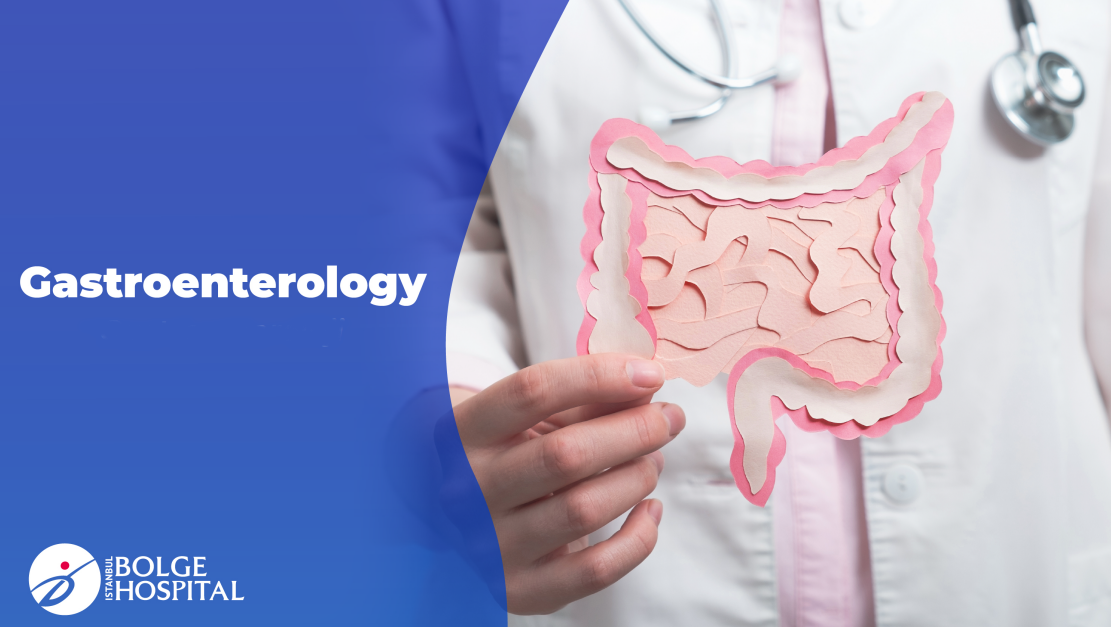
Gastroenterology
The department that studies the esophagus, stomach, small and large intestines is called gastroenterology. Other organs that the gastroenterology department deals with are the liver, spleen, gallbladder and pancreas.
When diagnosing the diseases of these organs, procedures such as endoscopy, colonoscopy, ERCP and ultrasound are part of the three-year gastroenterology residency training.
The main diseases that the gastroenterology department deals with diagnosis and treatment are:
• Reflux disease, difficulty swallowing, esophageal cancer
• Gastritis, stomach ulcer, stomach cancer
• Celiac disease, Crohn’s disease
• Ulcerative colitis, colon polyps, colon cancer, diverticular disease, chronic constipation, chronic diarrhea, hemorrhoids and anal fissure
• Hepatitis, hepatitis B, Hepatitis C, autoimmune hepatitis, Primary biliary cirrhosis, Wilson’s disease, hemochromatosis, cirrhosis, liver transplant, liver cancer
• Gallstones, obstructive jaundice, biliary obstruction
• Acute pancreatitis, chronic pancreatitis, Pancreatic cancer, pancreatic cysts
Procedures Performed in Our Gastroenterology Unit
Our patients, who were examined by a gastroenterology doctor, were put to sleep under sedoanalgesia given by the anesthesia department in our endoscopy unit;
ENDOSCOPIC PROCEDURES PERFORMED AT OUR GASTROENTEROLOGY CLINIC
• ERCP
• Endoscopic Reflux Surgery - ARMA
• Endoscopic ARBL Surgeries
• ESD (Early Tumor Removal)
• EMR (Endoscopic Mucosal Resection)
• ESG (Endoscopic Stomach Reduction)
ENDOSCOPIC UNIT
• Endoscopic Examination
• Esophagoscopy
• Gastroscopy
• Colonoscopy
• Capsule Endoscopy
• Double Balloon Enteroscopy
Transactions are carried out. After the procedures, the patients are rested for a while under the supervision of a nurse in the recovery rooms. Prescriptions of patients with laboratory and pathology results are written by the gastroenterology doctor in the clinic. Drug reports are issued when necessary.
WHAT IS ERCP ?
ERCP is an abbreviation formed from the initial letters of the words Endoscopic Retrograde Cholangiopancreatography. It is a procedure performed endoscopically by advancing to the region where the bile ducts flow, placing a catheter at the exit of the bile ducts, and administering a liquid contrast agent visible on X-rays to obtain images of the bile ducts. This allows for the determination of whether there are stones inside the bile ducts and whether there is any compression caused.
ENDOSCOPIC SURGERIES FOR REFLUX
• ARMA - Endoscopic Reflux Surgery
• ARBL - Endoscopic Reflux Surgery ARMA ARMA is an effective reflux treatment performed using endoscopy. The procedure is carried out under sedation, similar to other endoscopic procedures. It takes approximately 20-30 minutes to complete and is relatively easy and safe to perform. Coagulation is applied to the mucosa in the shape of a horseshoe, approximately 1 cm below the gastroesophageal junction and 1 cm away from the endoscopy device, using an argon plasma coagulator. It is recommended that the width of the lesion created in the horseshoe shape be 1 cm, with the central part being as wide as 2 cm. ARBL Reflux disease is a condition that affects 30-40% of the population today. Common symptoms include a feeling of tightness in the chest, the sensation of bitter taste in the mouth, and substernal burning. In addition to these common complaints, there are complications related to reflux that are not well-known, such as persistent dry cough, bad breath, and rapid tooth decay. The prolonged presence of reflux disease can lead to the development of Barrett's esophagus and, in addition, an increased risk of adenocarcinomas at the lower end of the esophagus. Nowadays, endoscopic methods, which are faster and safer than surgeries, are confidently applied in the treatment of reflux disease.